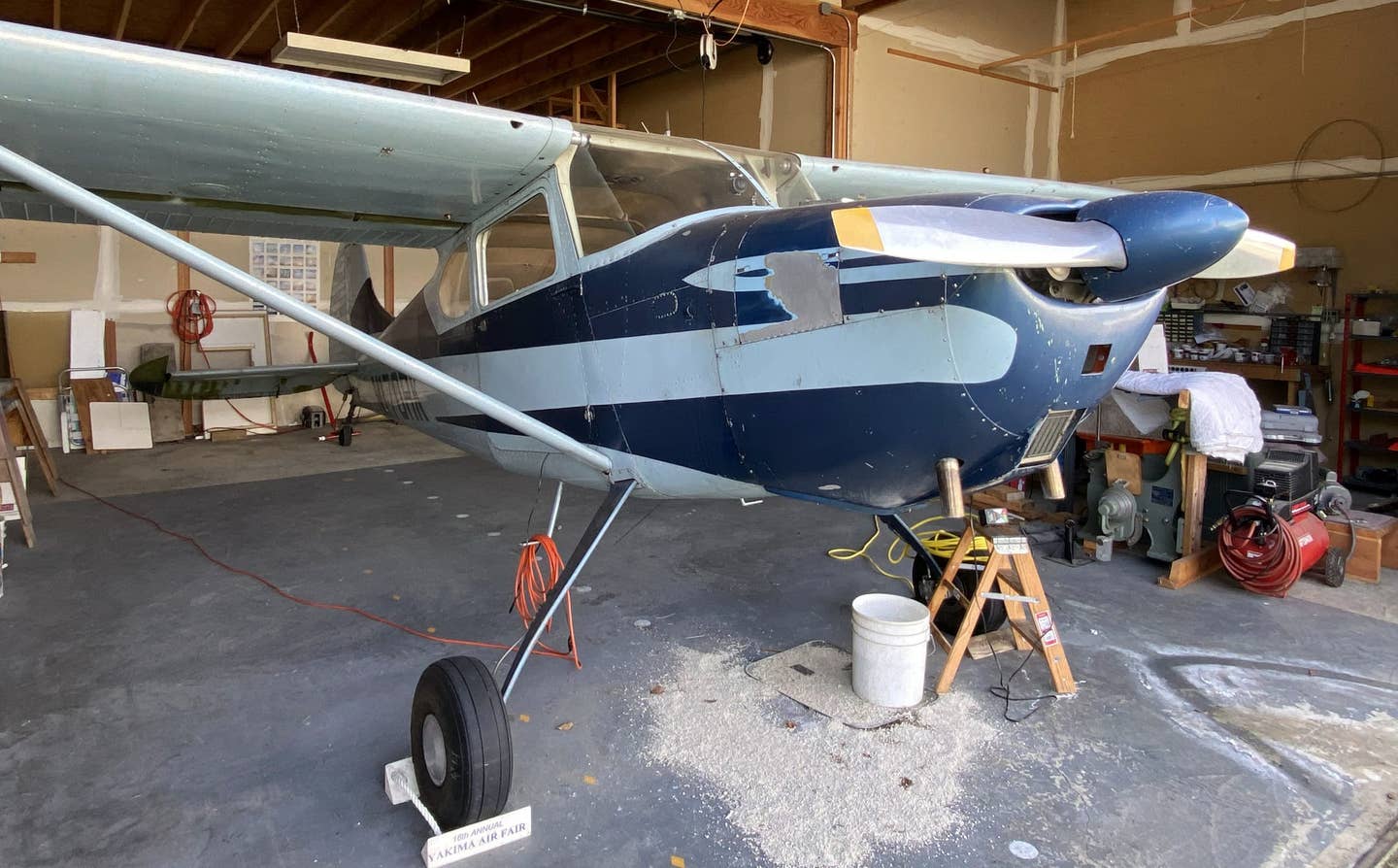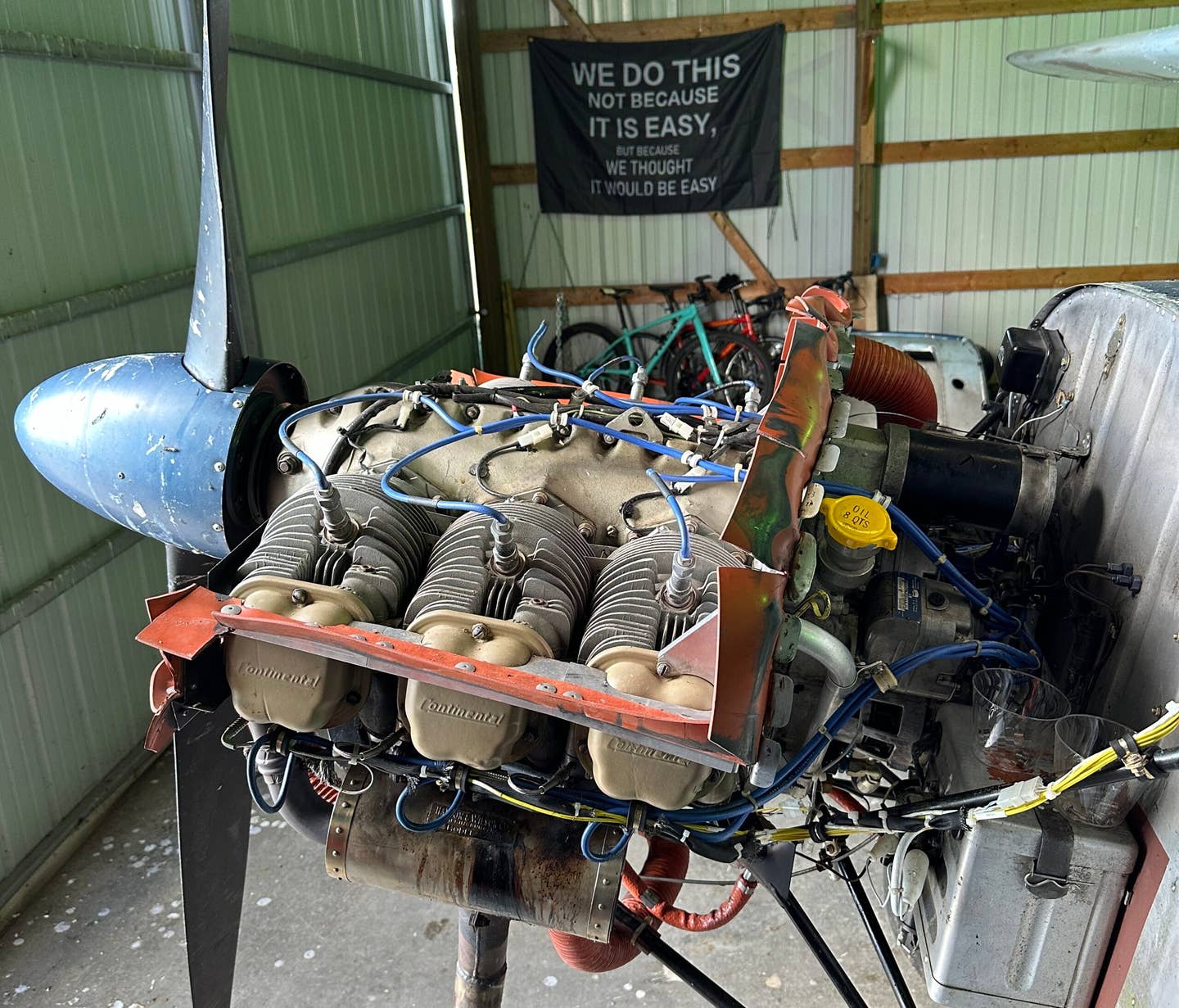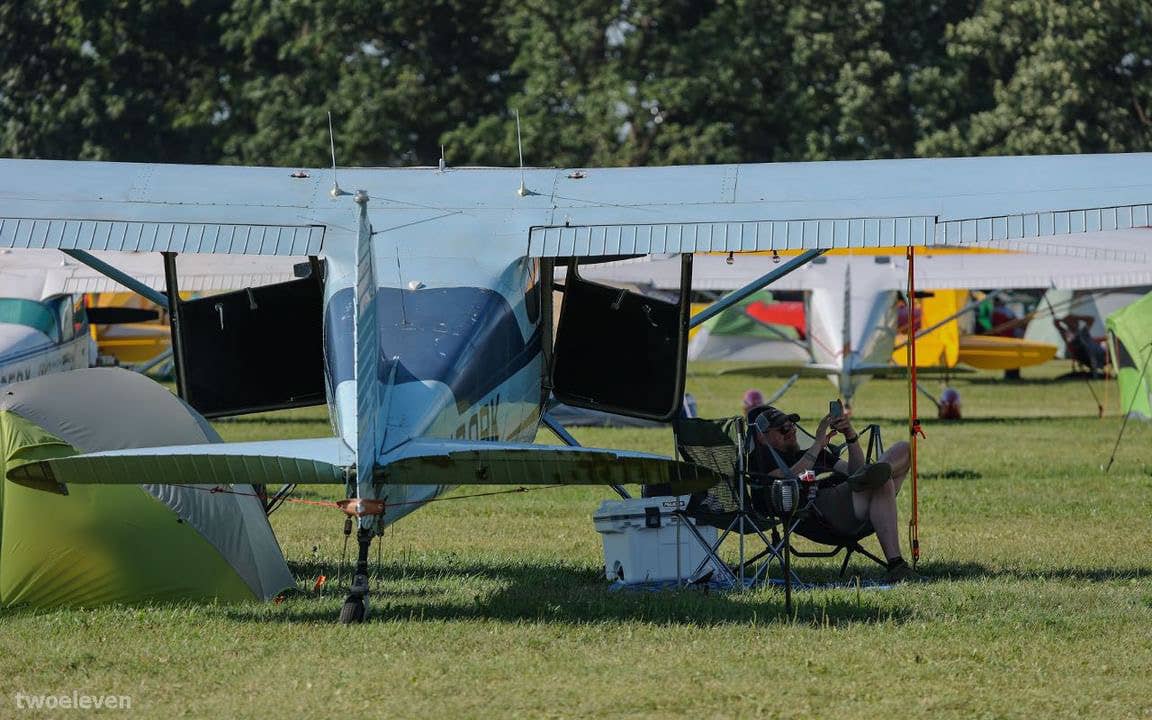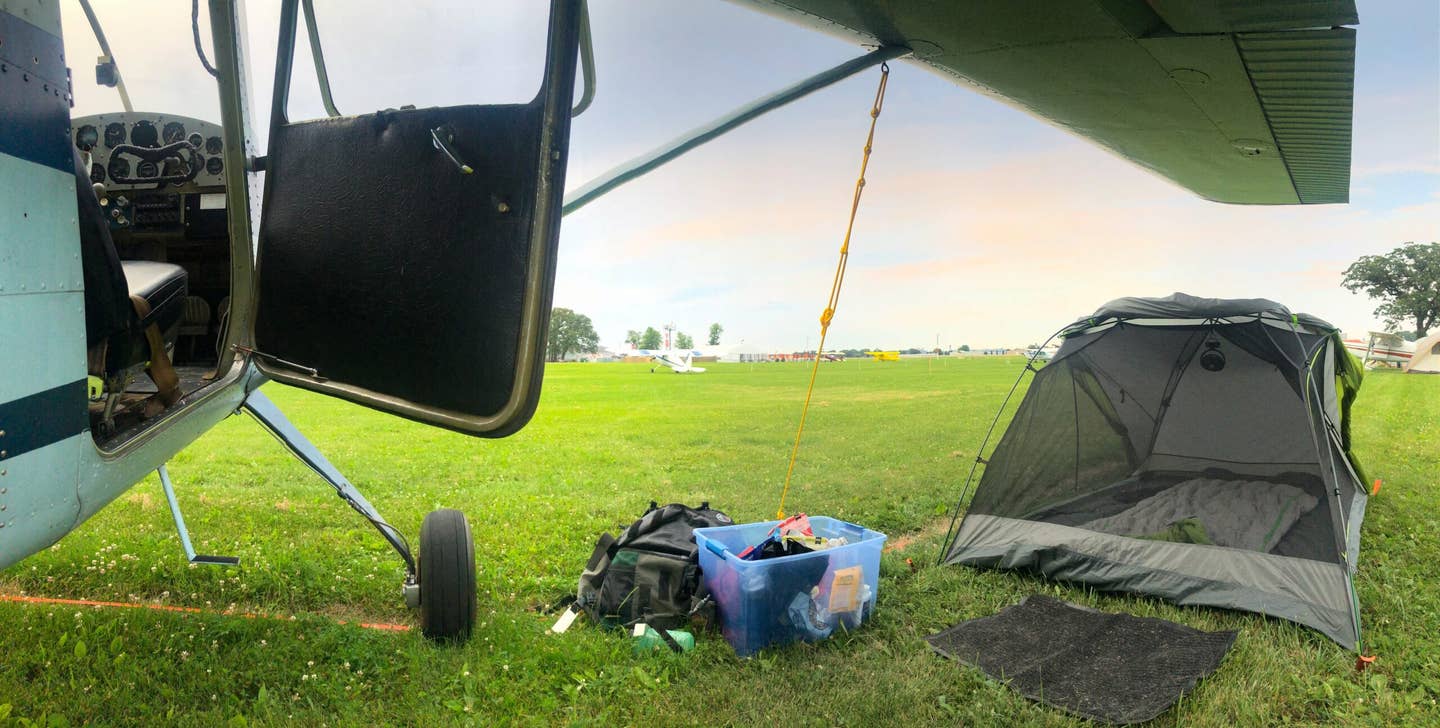Riding The Roller-Coaster of Inspection
Visual and mechanical tests mix with heavy dollops of nerves and self-doubt.

Your first sight of your first airplane is a memory you won’t soon forget. Credit: Chelsea Frost
In the process of purchasing your first aircraft, there inevitably comes a time when you wonder what in the world you’ve gotten yourself into.
For me, this happened at about 37,000 feet aboard a Delta Boeing 737. Typically, when I gaze out of an airliner’s window at the vista before me, I marvel at the majestic view and admire the engineering of the jet, its wing and winglets massaging lift out the air as the turbofans whisk the passengers across the country in safety and relative comfort.
But on that particular day, I was on my way to Seattle to observe the pre-purchase inspection of the airplane I was hoping to buy, and my mind was in a very different place. Visions of irreversible corrosion and neglected engine components clouded my vision as I anticipated the countless ways in which my carefully laid plans might be derailed.
“Visions of irreversible corrosion and neglected engine components clouded my vision as I anticipated the countless ways in which my carefully laid plans might be derailed. ”
A few weeks earlier, I had verbally committed to purchasing the 1953 Cessna 170 pending a successful inspection. The seller and I had agreed on a price, I’d closely examined photos of the airplane that a friend had taken for me, and I arranged for a local mechanic to perform the inspection. With any luck, the weather would allow for a test flight afterward.
While the anticipation of the inspection and purchase was somewhat stressful, I was extremely fortunate to have the luxury of ample time. The airplane was not being actively advertised, and the seller, Dick, was extremely accommodating. He and I got along well. We enjoyed our many chats that had taken place over the preceding weeks and he assured me that I could take my time and tackle each portion of the purchasing process as I was able.
- READ MORE: The New Owner: The Power of Networking
Still, the pressure was there, and if the mechanic was to uncover a major issue with the airplane, weeks of effort and around $2,000 in sunk costs would be forever lost. Such are the gambles one must take in pursuit of an airplane; we buy the airline ticket, we book the hotel, we schedule the mechanic, and we roll the dice.
On the drive from SeaTac to the small airport where Dick kept the 170, I created a fairly large mental list of red flags that, if discovered, would disqualify the airplane from contention entirely. Internal engine corrosion. Airframe corrosion. Evidence of neglect. Incomplete logs. STCs that lacked corresponding documentation. Poor stall characteristics. Poor rigging. I was making a point to avoid getting my hopes up.
Having once owned a rotary-powered Mazda RX-7 and a BMW motorcycle that both became horrific pits of mechanical disaster, I had learned the harsh consequences of purchasing a vehicle on a foundation of optimism. This time, I was going into the process hugely pessimistic. I was expecting the absolute worst, and I was willing to become a believer only after being presented with the proper supporting evidence.
When I arrived at the hangar, Dick was there to greet me. It was good to finally meet him in person after our numerous and lengthy phone conversations, and he welcomed me into the hangar he had owned since the 1980s. The hangar had character—it was appropriately cluttered without being overtly messy. Projects in various states of completion were scattered about, and there, in the center of it all, was N170RK, the airplane I hoped would soon be mine.
The Eye Test
It was just as he described it—adorned in its original, circa-1953 paint job and fairly nice looking from about 50 feet away. But for every step you took toward it, another few years of wear became evident, and it eventually became clear this was an airplane with many stories to tell.
Dick was an engineer in every sense; he was acutely concerned about the mechanical condition of his beloved machine, but he couldn’t possibly have cared any less about its visual appearance. Over the years, when he recognized that the paint on the elevator and on the leading edges of the flaps was thinning and beginning to expose bare aluminum, he simply sprayed olive green zinc chromate directly onto those surfaces. The result was a vintage, 1950s-era two-tone blue paint scheme with what appeared to be blobs of matte dark green spray paint applied at random to the airframe.
Functionally effective, but visually repugnant.
The interior was just as shabby. While the plain black vinyl seats and upholstery were in reasonably good shape, the headliner was tattered, with stains of unknown origins discoloring the already dirty-looking gray fabric. The floor was no longer covered with carpet. Instead, bare metal was still smeared with the ugly yellowed remnants of the original 68-year-old carpet glue.
The result was the aviation equivalent of a 1950s-era ratrod. I loved it.
I loved the original, retro paint scheme. I loved the worn patina that took decades to develop. I loved the purely utilitarian interior. But most of all, I loved how the airplane wasn’t actively *trying* to look cool or flashy. In the crowd of gleaming Cirruses with popped collars, pastel shorts, and perfectly coiffed hair, this airplane was a grizzled, unshaven dock worker with an old flannel shirt, ragged Carhartts, and a pinch of Skoal filling its lower lip. It smoked unfiltered Camels, listened to Waylon Jennings, and didn’t give a rat’s ass what anyone thought of it.
- READ MORE: The New Owner: Vintage Records
I envisioned myself taxiing up to an immaculate Signature FBO, threading my way through all the stately Falcons and Gulfstreams and parking right up front, the corporate pilots to my sides eyeing me warily and wondering whether their immaculate jets might catch fleas from my ratty old taildragger.
Dick spent the next hour or so giving me a narrated walkaround. He explained how he preserved the engine when extended periods of nonuse were imminent. He showed me some of the idiosyncrasies he’d discovered over the preceding 40 years of ownership, and educated me on how best to maintain various systems and components.
Having owned the airplane for so long, and having purchased it from a close friend who had owned it for the 10 years prior to that, you’d think Dick would be able to explain every last detail of the airplane, down to the last rivet. For the most part, he was indeed able to do so...but there was one exception—the altimeters. Yes, plural.
For some reason, at some point between 1953 and 1970, someone had installed a second altimeter in the panel. One appeared to be fairly modern, like any other analog altimeter you might find. The other appeared to be from another age, with a simpler face and numbers that were slightly faded.
I’d later find this to be an annoyance. Every time I’m provided with an altimeter setting, I set both of them—and then upon seeing a slight discrepancy between the two, I become distracted, wondering which of the two is more accurate and why.
The Mechanic Arrives
Dick continued his detailed tour of the 170 until my mechanic arrived a short time later. I gave the mechanic plenty of space to allow him to focus and work uninterrupted, and he ultimately gave the airplane a clean bill of health. He discovered no mechanical issues and the engine compressions were impressively high. He noted three or four very minor items that would require attention at some point, but he could identify no problems. This allowed me to cross several items off of my mental list of reasons not to purchase the airplane.
The mechanic then spent about an hour reviewing all the logbooks and paperwork that Dick kept nicely preserved in a set of binders. The logs were neat and orderly, arranged in multiple binders and plastic sleeves. Again, he noted no issues, and my list of potential red flags became even smaller.
Taking it Up
All that was left was the test flight. Dick wasn’t able to fly because of medical issues, but he thoughtfully added his friend Jerry to his insurance policy and had arranged for him to take me up for a ride to see how the airplane flew.
Having flown 140s but never 170s, I was happy to let Jerry handle the takeoff and landing. Mostly, I was concerned about how the airplane trimmed out and stalled. Fresh in my mind were memories of a rental 152 that had some serious airframe issues. That 152 never seemed to trim out perfectly, and every stall was accompanied with a violent wing drop to one side regardless of how perfectly centered you kept the ball.
Fortunately, the 170 flew beautifully. It trimmed out with little effort and happily maintained altitude and heading with no control inputs. Stalls were similarly uneventful. The nose dropped straight ahead with all the correct control forces and plenty of tactile feedback. The engine ran strongly and smoothly, and Jerry reported no issues during takeoff or landing.
Later, as I recounted the flight with Dick and went through my list of original concerns one by one, it occurred to me that they had all been addressed. This was an odd feeling. I’d been fully expecting to be left with one or more reasons to pass on the airplane. Instead, I stood there in silence with a dawning comprehension that I was no longer able to identify any remaining reason not to buy the airplane. It was at that moment that I realized I was about to become an owner.
I didn’t know it at the time, but the subsequent months would involve stratospheric highs and soul-crushing lows. Orchestrating the complex logistics of making the purchase and getting the airplane from Seattle to Wisconsin would prove to be on par with that of assembling a small Naval flotilla.
I was about to get in way over my head, and though I’d be flailing wildly to stay afloat, I’d remain thankful for the opportunity and good fortune to do so.

Subscribe to Our Newsletter
Get the latest FLYING stories delivered directly to your inbox






